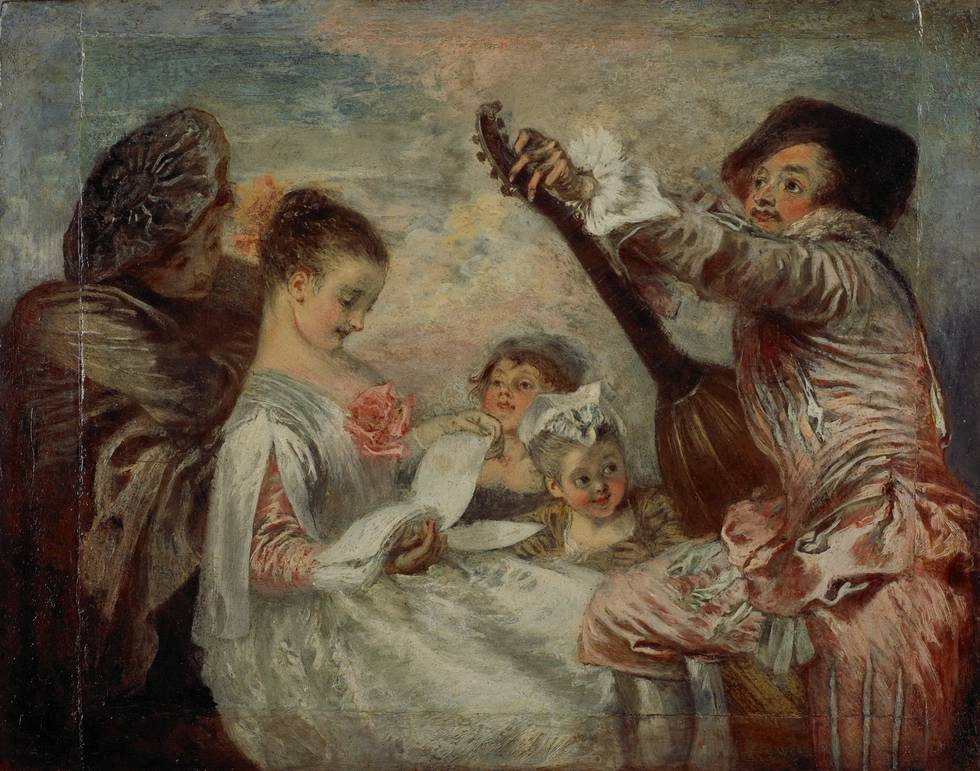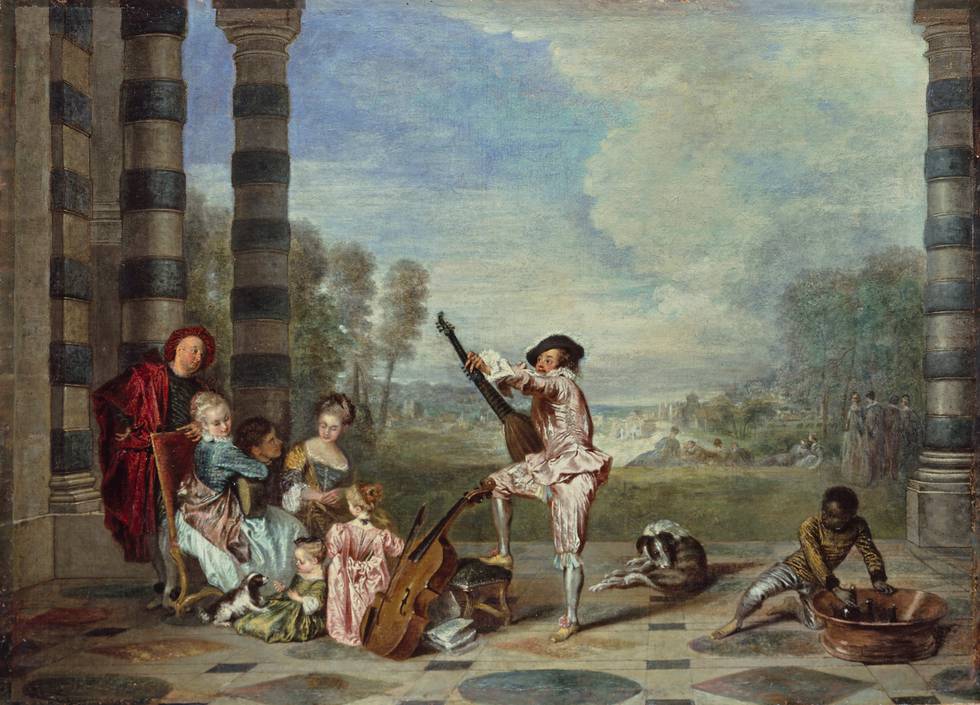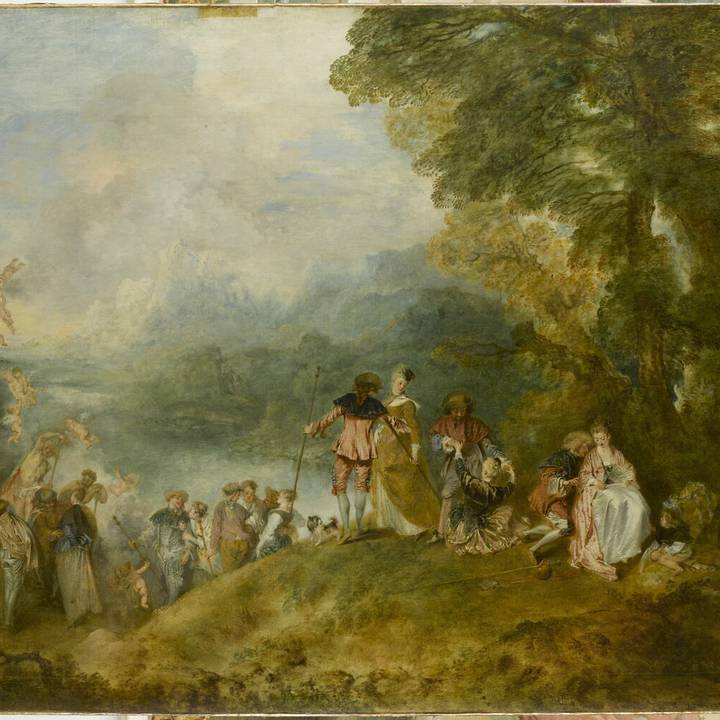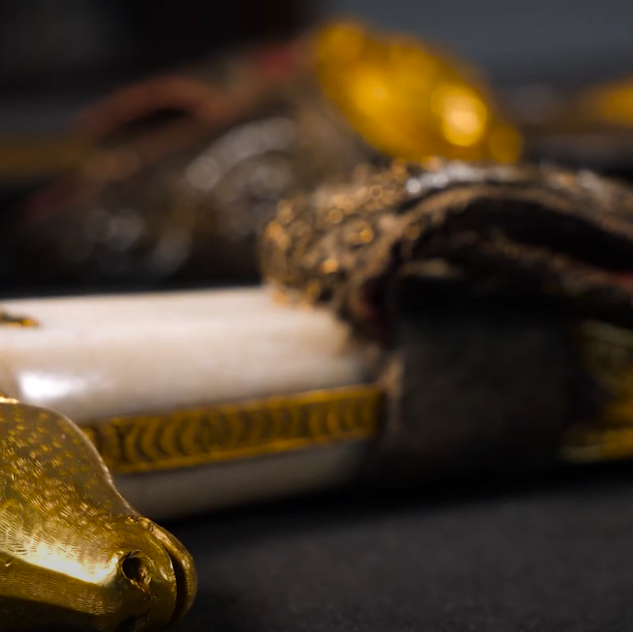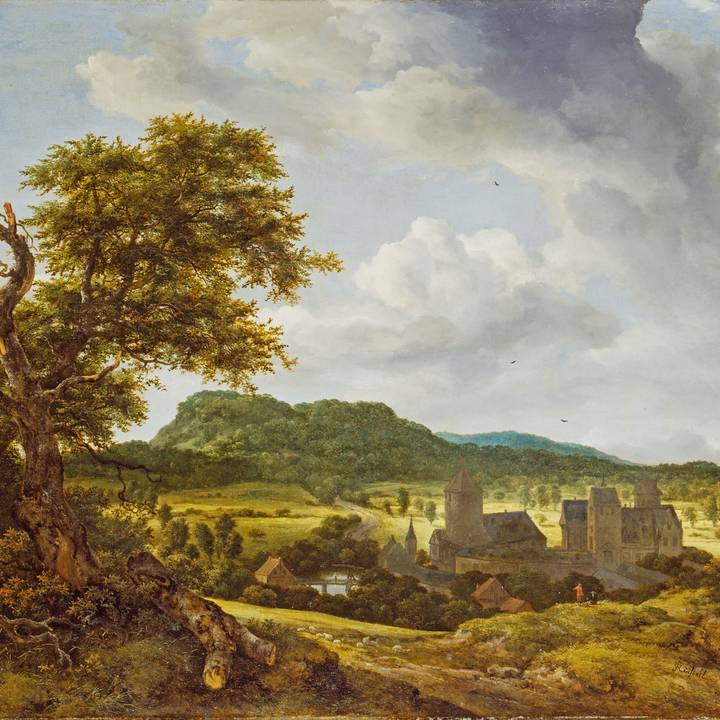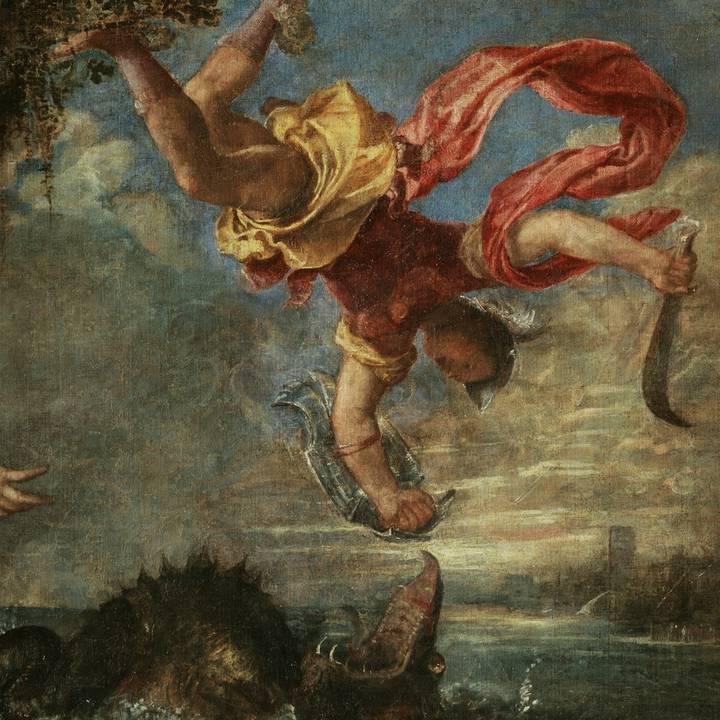MEET THE EXPERT: THEMES OF THE FÊTE GALANTE
Antoine Watteau is best remembered as the painter of a form of painting that we now know as the fête galante. We tend to describe his compositions as dreamlike depictions of beautifully-dressed aristocrats at play in lush parkland settings. But what are they about? This month, we commemorate the tercentenary of Watteau’s death by identifying five key themes of the genre he created.
Commedia dell’arte
Watteau worked in Paris in the first decades of the eighteenth century. Paris was then a city of some 500,000 inhabitants, second only to London in population. In the final years of Louis XIV’s reign, the dynamic French capital outshone the court at Versailles. As the city took on new cosmopolitan allure, it became home to an emerging public theatre. Commedia dell’arte, or Italian comedy, troupes roamed the streets, staging impromptu performances. Watteau incorporated visual elements and themes taken from this stock theatre into his paintings. The mournful clown Pierrot, the trickster Mezzetin, the comic servant Harlequin and his elegant sweetheart Columbine cavort through some of his most famous works, including Voulez-vous triompher des belles? where Harlequin — identifiable thanks to his lozenged suit and black mask — appears to have lunged out of a wooded glade to startle Columbine.
Music
Watteau frequently depicted his merry-makers playing music. Here the standing man plays a theorbo, that is a plucked string instrument of the lute family used to play in the bass register. Other stringed instruments, such as violins, and woodwind instruments (oboes, musettes, bassoons, flutes) regularly make appearances. These depictions are notable for their high degree of technical accuracy, which makes sense given Watteau’s affiliations. His close friend Antoine de La Roque was a librettist for the Paris Opéra and also played the flute, and he came into contact with many professional singers and musicians at the home of his friend and patron Pierre Crozat.
Fashion
No one painted the shimmer of silk or the delicate fall of a lace cravat more skillfully than Watteau, and it comes as no surprise that he was fascinated by contemporary fashion. He produced two series of fashion-plates, one published in around 1710, the other in 1715, showing single figures in the most up-to-date styles. These focused compositions enabled him to perfect the graceful turn of an ankle, the sweep of a skirt in motion, or the nonchalant gesture of hand to hip, all elements that he brought into paintings such as Les Champs Elisées. The sack-back gown, a style worn by the lady who looks directly out at the viewer in the centre of the composition, was so closely associated with Watteau that in the nineteenth century, it was known as a ‘Watteau gown’.
Fantasy and reality
In many ways, Les Charmes de la vie is the quintessential fête galante with its colourful depiction of an impromptu musical contest. The standing man (in pink satin no less!), tuning his lute, presumably to accompany the seated guitarist, who, however looks away nonchalantly. Notwithstanding these little dramas, the mood is calm, the music-makers relax into their leisurely pursuits. Save for the little figure on the right, who hovers, ready to offer refreshments — because service is, presumably, his lot in life.
Much ink has been devoted to this little figure, to how Watteau might have understood him or intended him to be understood. Answers are not readily forthcoming. On the one hand this painting was made for a textile merchant whose profession was intricately linked to the trans-Atlantic trade in human life. On the other, there is something intensely sympathetic about the small figure, his watchfulness, his isolation. While we cannot know what Watteau thought, the painting does indicate that the fête galante presents a more complicated, more uncompromising view of French society than has previously been supposed.

